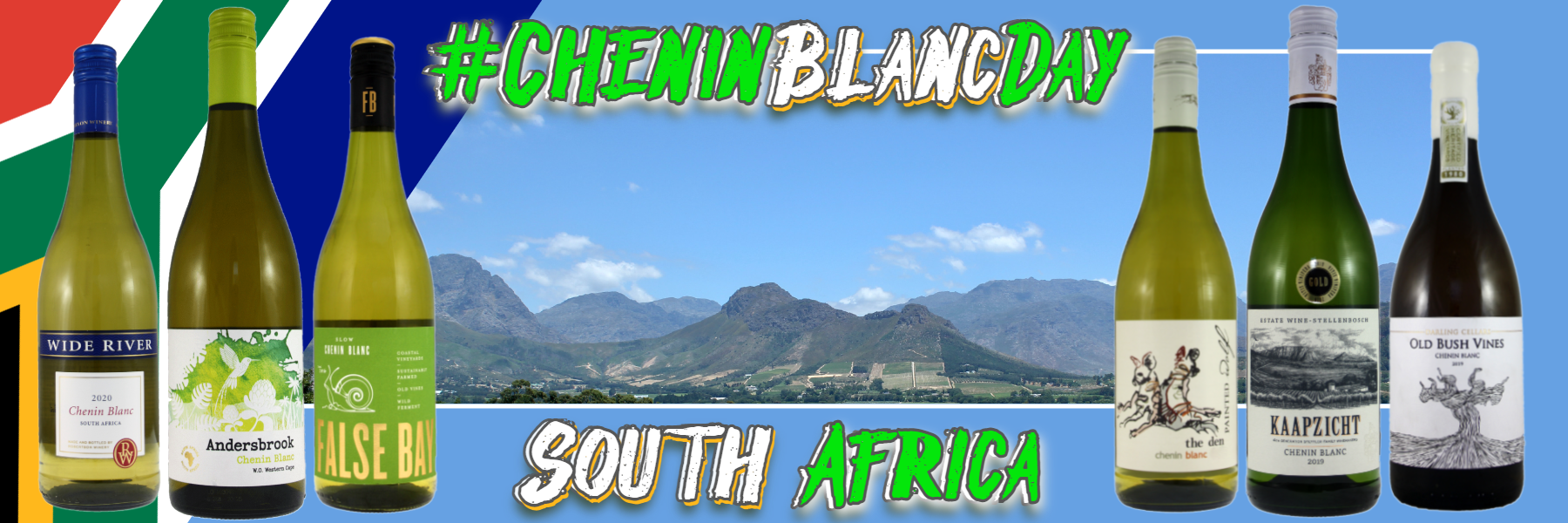Summer has finally arrived and, if you haven’t upped your consumption of IPA and cider, you’ll be hovering around the fridge waiting for your whites/rosé/fizz to chill to almost sub-zero temperatures. So, whilst waiting for potential, cool refreshment, you can avail yourself of reading yet more incoherent ramblings of an oenophile. If you find any mistakes, blame it on the heat!
This time it’s all about some of the best wines you can find from the #CheninBlanc grape. Once considered so inferior that ancient vineyards were abandoned, it’s now up there with the great and the good. Some sense at last. Make the most of it whilst you still can.
It’s #DrinkChenin #CheninBlancDay on the 18th June and, for most of you, your experience of the Chenin Blanc grape variety is likely to be from South Africa. It’ll probably be a fairly inexpensive, dry white that you grab from the fridge when you get home from work. It’s a gluggable and everyday wine about which you won’t get too excited. But there is more!
Of course there’s more, and it begins in France. So long ago that I can’t even remember the year, but I think it involved one of the “field trips” the West of England Wine & Spirit Association ran for students and members of the wine trade who wanted to experience wine where it was made and meet up with the people who produced such exciting bottles. Many of my early wine adventures involved this group travelling to the world’s vineyards and top producers. Pity I had to pay for the visits myself as many could count them as “business” and not as a holiday!
These days, most Chenin Blanc is vinified into a “still” wine, but in the Loire valley, France, a large amount is made into sparkling wines from various appellations in the form of Cremant de Loire, Saumur Mousseux, Vouvray Petillant (Semi-Sparkling) & Mousseux (Full-Sparkling) and these are all made by the “Methode Traditionelle” (Champagne Method).
My visit involved seeing deep inside the cellars of Marc Brédif in Vouvray (just east of the town of Tours) who, like many in the area, make use of the soft, “tuffeau” limestone soils to carve out vast underground storage facilities to age their wines, often kept for many decades to mature slowly in perfect conditions. This is where I sampled all the usual dry/medium/sweet wines in the Brédif range, but it was a very rare bottle of early 1960’s sparkling Vouvray that caught my attention.
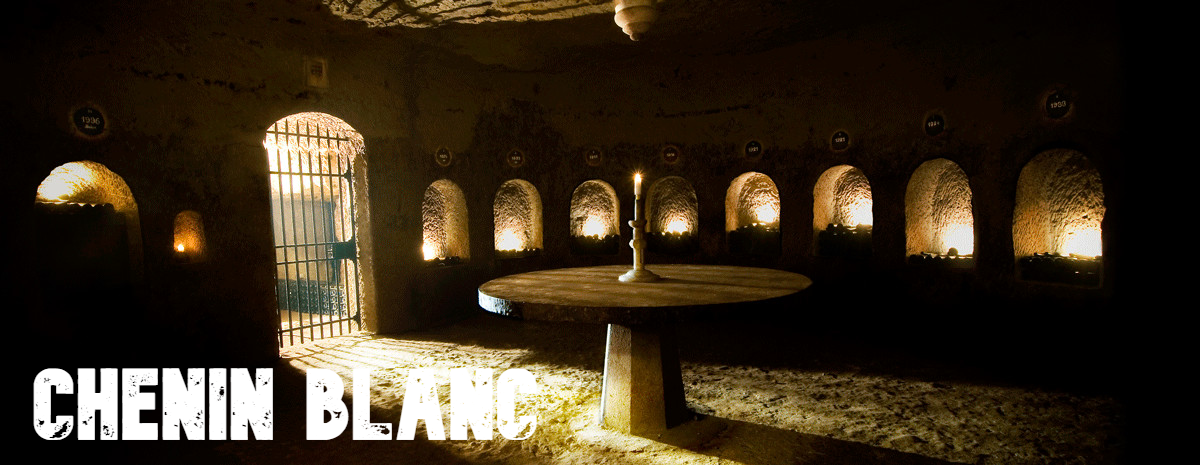
[Photo: Cellars at Marc Brédif, Vouvray]
It had been aged in bottle in the cellars for more than 30 years and the colour of the wine was a deep copper, it barely had any fizz and, surprisingly, tasted of Marmite! I’m not sure if it originally began life as a white wine because it looked like an old, oxidised rosé. A house “speciality”, they said. My thoughts? An extremely weird wine that was very much an acquired taste. At that time it was probably the oldest bottle I had ever tasted and it showed me that wines could taste very different after bottle ageing. Sometimes, younger is better, but Chenin can be one of the longest aged wines and, from the greatest producers, will out-live just about any other wine and, thankfully, for the drinking pleasure of most of us, Marmite is not in the flavour profile.
Young, fresh vintages of Chenin were always described in text-books as having an aroma of “wet dog”. Another characteristic that, for me, was not inspiring, but times and styles change so, today, you’re more likely to encounter anything from fruit flavours such as Apple/Pear/Lime/Apricot/Quince/Grapefruit to Honeysuckle/Beeswax/Lanolin/Honey (with some ageing) and a rich texture wrapping the wine with a stony & saline feel. The acidity can be high, but this is what allows the wine to develop over such a long period and still taste fresh. Now we’re getting better!
Generally, in France, Chenin Blanc wines are either completely dry, or very sweet (botrytis affected) dessert wines. Vouvray can also make fantastic “Demi-Sec”, medium-sweet, wines that will highlight fruity notes and will pair with all sorts of dishes from Asian curries and Moroccan tagines to fruit-based tarts.
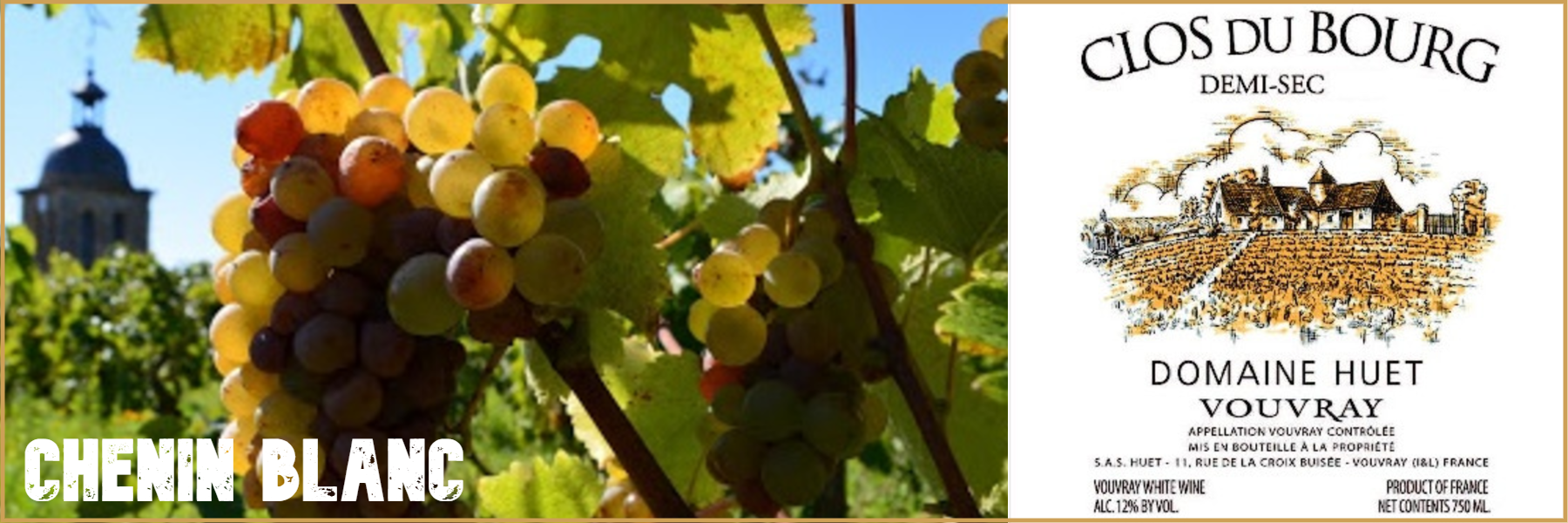
The best producer of the “Demi-Sec” style is considered to be Domaine Huet’s Vouvray “Clos du Bourg”. It’s made using biodynamic principles, will keep for decades and is a compelling bottle that you can obtain for as little as £35.
“Gorgeous, with creamy-edged nectarine, yellow and green apple, pear and quince flavors that are brightly defined from start to finish, flecked with verbena and honeysuckle hints and backed by a off-dry edge on the finish. Stays fresh and pure throughout. Tempting now but there's no rush. Drink now through 2032. 600 cases made.”
Wine Spectator rated the 2016 vintage 95/100 points.
Founded in 1928, Domaine Huet is definitely “numero uno” in Vouvray. There’s a huge range of wines made here to the highest standards, all scoring well into the mid-high nineties points (out of 100) from most critics. Serious bottles at excellent prices, considering the top-end quality you get with every wine.
If the “dry” style of Chenin Blanc is more suited to your palate, another biodynamic grower, Nicolas Joly, located further to the west, near Angers, in Anjou, is one to sample if you get the chance.
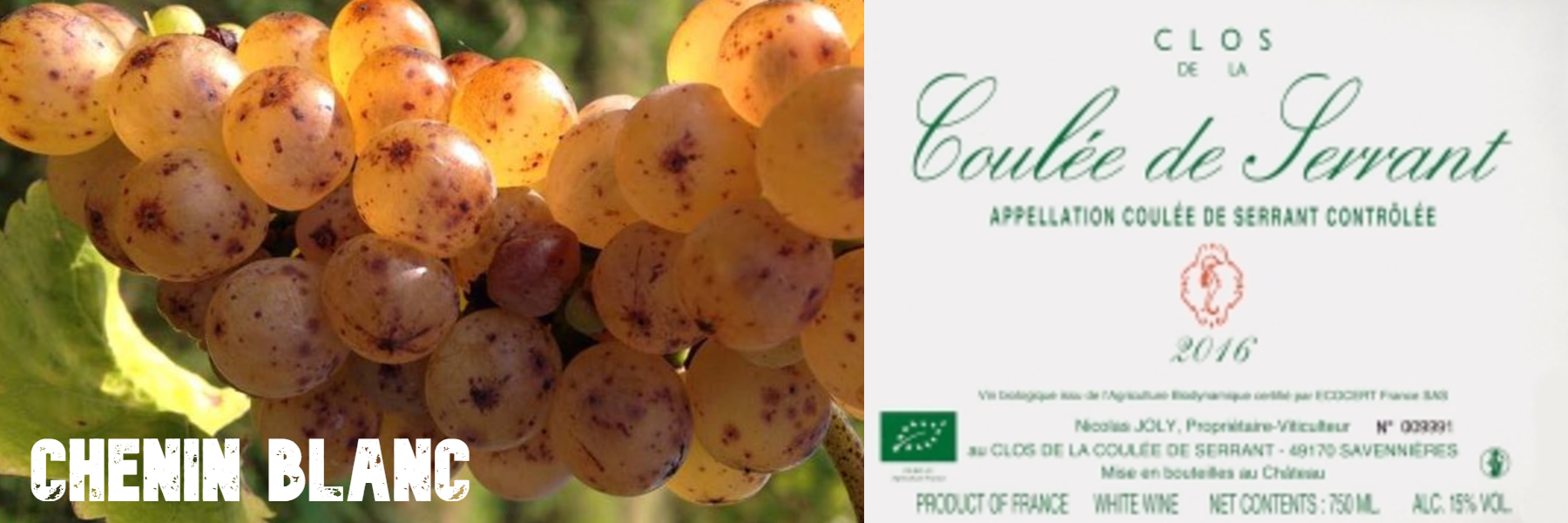
His three Savennieres wines, notably the “Clos de la Coulée de Serrant”, are unique in their character and are all “bucket-list” wines for the confirmed enthusiast. Current vintages are around £80-£100 a bottle; older wines are available at a price (don’t ask!). His wines, often made using noble rot affected grapes are cloudy, deep coloured and always dry (no sweet versions here). They’re often described as tasting like a dry version of Sauternes.
“The yellow-golden 2014 Clos de la Coulée de Serrant, a world famous and iconic Chenin with its own appellation (Savennières – Coulée de Serrant AC), opens with a beautifully clear, precise and aromatic bouquet of ripe and dried, lovely concentrated stone and grapefruit, as well as some honey aromas intermixed with crushed crystalline stones and herbal flavors. Highly elegant, clear and vital on the palate, this full-bodied wine is immensely intense but also silky, transparent and finesse-full. The long and stimulating finish is enormously piquant and salty, very compact but in perfect balance. There are dried Mediterranean herbs like thyme along with concentrated apricot and quince flavors in the persistent aftertaste. A great, elegant and very refined Coulée.”
Rated 95+/100 by Stephan Reinhardt, Wine Advocate, 2016
Quality shows and Nicolas Joly is considered by many to be a master of Chenin based wines.
At around £90 a bottle, this beauty is definitely placed in the “fine wine” category.
If you gravitate towards really luscious, sweet wines, Chenin Blanc will also cater to your desires.
Chenin, similar to Riesling, make brilliant, age-worthy, dessert wines. In both Vouvray and the Coteaux du Layon appellations (including the tiny Quarts de Chaume & Bonnezeaux regions), you’ll find ethereal wines that are the perfect foil to…you guessed it…apple pie. Not just any old apple pie, but a Mr Kipling’s (special edition) Apple Pie containing real dairy custard.
This magical combination came about when I was working in Lymington, Hampshire. A bottle of 1990 Layon/Quarts de Chaume (unknown producer) was opened to drink with the said Mr Kipling apple pie and what a treat it was. It was one of those incredibly rare occasions where the combination of food and drink created such a heavenly match. The wine was good, so was the pie, but put the two together and WOW. A wonderful taste memory!
The new “Classic Apple/Pear/Custard Crumble” is just not the same beast at all. Exceedingly average.
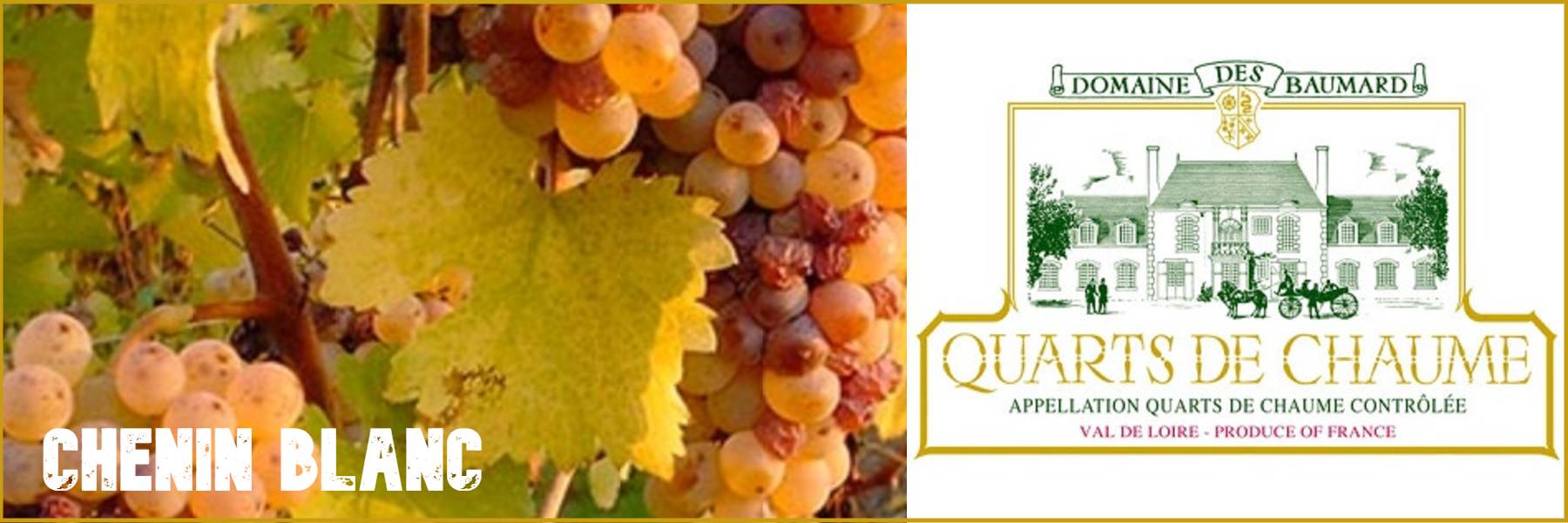
South of Angers, the four century old property, Domaine des Baumard, in Rochefort-sur-Loire, makes a superb selection of dessert wines including Quarts de Chaumes and their wines are some of the best in the appellation. Ridiculously low yields (5hl/ha – 18hl/ha) of organic fruit give minute quantities of wine with impressive richness and elegance.
The 2010 vintage was given 96/100 by Wine Spectator:
“Unctuous, concentrated and refined, this holds a large core of quince, creamed Anjou pear and white ginger notes in reserve for now, while heather, chamomile, orange blossom and white peach flavors take the lead. When the reserves stretch out and catch up with the floral accents, this will be a pure, precise stunner, with a long life. Best from 2018 through 2035.”
The property, itself, recommends that its wine:
“Can be tasted and enjoyed by itself, but is perfect for refined appetizers like foie gras on toast or with blue cheese. Delicious with cooked peach, apricot and pear deserts. Try it with fresh fruits and nuts, like pears, peaches, apricots and almonds. We like to serve the wine directly inside freshly halved melons.”
Another cheapie at around £70 a bottle for the latest vintage. Why is the good stuff always so expensive?
And now we arrive at South Africa. The country has more Chenin Blanc planted than France, so the grape is going to show up in a great number of bottles. Nowadays, the search is on for patches of forgotten, gnarly, old bush-vines (over 30 years’ old) and the variety has many of the up-and-coming winemakers desperate to include some in their portfolio. These wines, now capable of selling for between £20-£50 a bottle, are a long way from the mass produced £3.99 KWV wines of old which used to be the only SA wines available on the UK market.
South Africa currently has a crop of young winemakers who are redefining what is expected, quality-wise, by consumers. Eben Sadie, Lukas Van Loggerenberg, John Seccombe (Thorn & Daughters) and Donovan Rall are just a few names to follow. There are many more!
One couple, Chris and Suzaan Alheit, whose rise has been nothing short of meteoric, are based in Hemelrand farm in Hemel-en-Aarde Ridge (Overberg), but most of their rented vineyards are a long distance from their winery with fruit coming from numerous sites in False Bay, Bottelary Hills and Upper Blaauwklippen (all in Stellenbosch); Tygerberg (Cape Town); La Colline (Franschhoek); Paardeberg, “Skurfberg” /Olifantsrivier and Malmesbury (all in The Swartland). That’s a lot of work.
Their first release was in 2011 and it was called “Cartology”. A blend of mostly Chenin Blanc and Semillon, sourced from half a dozen locations around the Cape, it was an instant hit. Around £40.
Neal Martin, Wine Advocate, rated the wine a massive 96/100 - Not bad for a first effort!
“The maiden 2011 Cartology Bush Vines is a blend of 92% Chenin Blanc and 8% Semillon from vines between 320m and 540m in altitude from Perdeberg, Citrusdal Mountains, Kasteelberg and Bottelary Hills, while the Semillon is from Franschhoek. It has a heavenly bouquet that blossoms from first opening: quince, wild honey, melted candle wax, a touch of almond developing with time and lemon curd. It offers brilliant delineation and gains complexity with time in the glass. The palate is succinctly balanced, fresh as a daisy, brimming with energy from its potent attack to its perfectly focused, mineral-laden finish”.
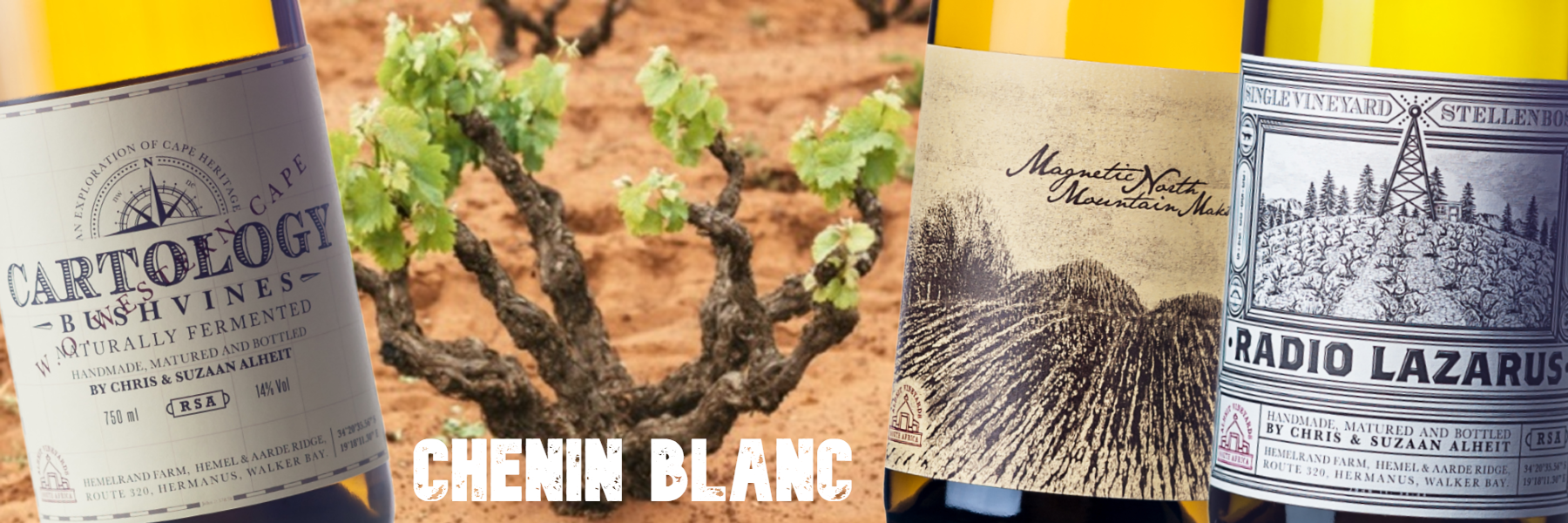
Single vineyard wines have always been their focus and the first one to achieve acclaim was “Radio Lazarus”. Unfortunately, severe drought killed off this vineyard and the wine was last made in 2017.
“Magnetic North”, from the Skurfberg (This Swartland vineyard is 5 hours’ drive north from Hemelrand), uses fruit from ungrafted vines on their own roots. A tiny production of around three thousand bottles. These wines are made to be as natural as possible and the winery quotes: “No yeasts, no enzymes, no acidification, no sulphur before ferment, no blocking malo, no new barrels, no fining etc. No manipulation.” A wine that showcases its vineyard above all else.
Tim Atkin MW, rates the 2019 vintage an incredible 99/100 points and says: “Just a whisper away from perfection, this is what a great winemaker does with a world-class vineyard in a smart white wine vintage like 2019. Picked early to retain freshness and focus, Magnetic North hails from two dry-farmed bush vine parcels on Basie van Lill's property, planted in 1981 and 1984. Combining understated power with focus, it has line, length and focus with pear, citrus and wet pebble flavours and a hint of breeze-borne sea salt. Simply stunning. 14% alc. 2022-2032.”
If you can find a bottle, it’ll set you back at least £80.
For my taste in Chenin Blanc, I think it’s hard to come up with any wine to top Ken Forrester’s FMC
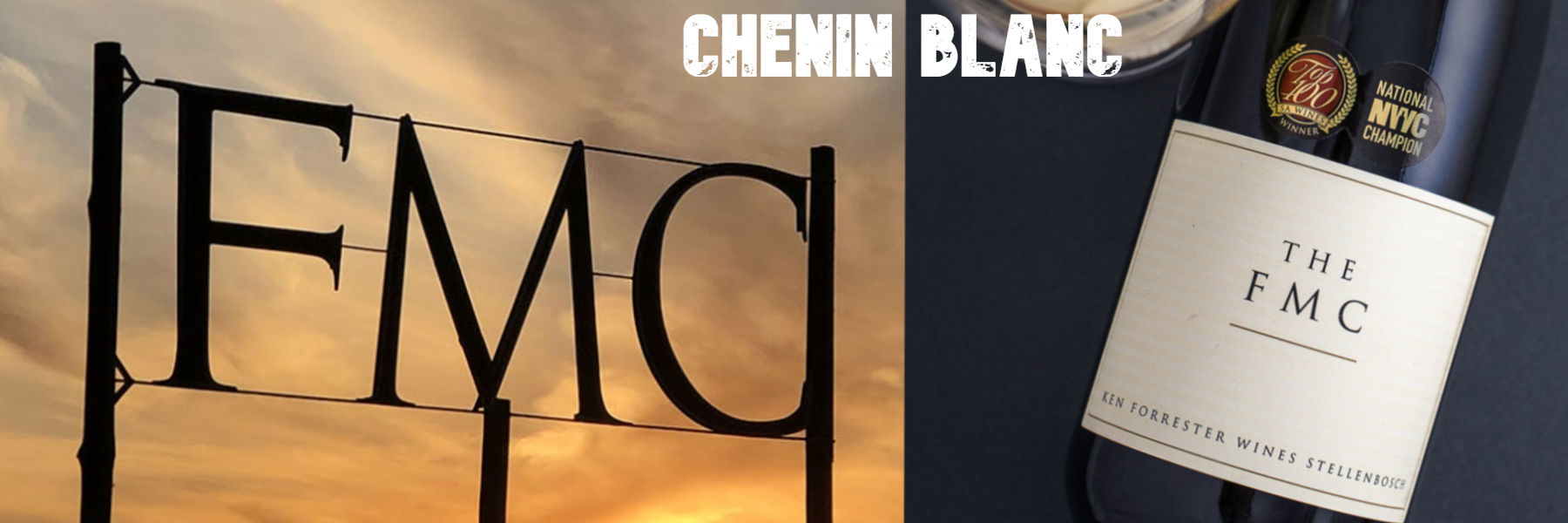
Ken is definitely not part of the young & up-and-coming group of winemakers. He’s established, he’s very successful, and his “Icon” white wine, the FMC, is made in a style that’s nearer to a Vouvray Demi-Sec.
The original “Cape Dutch” property was established in 1689 (Ken’s not that old!), and after many changes in ownership over the centuries, it was finally bought in 1993 by “Mr Chenin”, himself, Ken Forrester. The vineyards are situated in prime Stellenbosch country, close to the Helderberg mountain, south of the town. A reputation for quality has been achieved over more than 25 years with sustainable viticulture and hand working of the raw materials adding to the emphasis on making the ultimate Chenin.
“FMC” (Forrester Meinert Chenin) is a barrel fermented wine that’s made in an off-dry style. The fruit is hand selected on up to 10 separate occasions to ensure perfect ripeness at harvest. It’s so well made that, once tasted, you just have to buy some. I did, and it’s long been a favourite of mine. A pity the price keeps going up… now well over £30 a bottle, but still worth it.
Multiple layers of dried apricot, vanilla and honey with great depth and length of finish are the hallmark of the FMC. The wine’s won so many awards over the years and is often listed in Michelin-Star restaurants. Highly recommended to find this wine. It certainly should be on the Frazier’s list so I can buy some more!
What do the critics say?
“A wine I have admired for many, many years, FMC is Chenin at its most opulent. From low yielding bush vines planted in 1974, it is harvested at full maturity and fermented with wild yeasts in new 400-litre French oak barrels. Some botrytis is always part of the harvest here, though the 9g/l of residual sugar is easily absorbed by the acidity and structure. Honeyed, nutty and ripe, there's a quince and fig touch to this, before a luxurious palate, rich with honey and nectarine, sheer acidity will ensure longevity too.” 94/100 points
FMC - 2015 vintage (tasted 2019) by Tom Cannavan
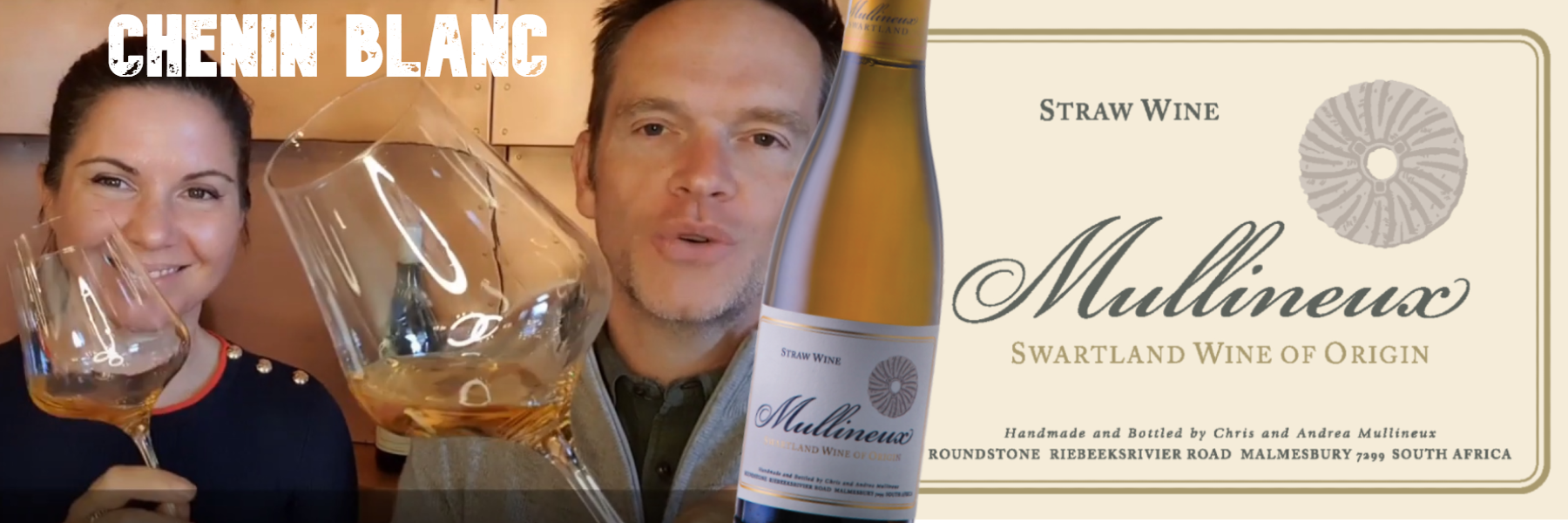
My final choice of the best in South African Chenin Blanc is the Mullineux Straw Wine
This one’s for those of you who need a big “sugar hit”, but in a subtle, grown-up way.
Firstly, as a “Wine Geek”, a bit of background information is needed on how this sublime Swartland, sweet wine is produced by Chris & Andrea Mullineux.
Naturally ripe grapes from two sites, one from a parcel of 36 year old Chenin on the shale/schist soils of the Kasteelberg and one parcel of 40 year old Chenin on the decomposed granite of the Paardeberg are picked and then left outside for around three weeks to partially dry and raisin. The moisture in the grapes evaporates, concentrating the sugars, acids and flavour. The yield is drastically reduced from 30hl/ha (fresh grapes) down to a mere 6hl/ha (dried) and, after crushing and whole bunch pressing into old oak barrels, the fermentation then takes six to nine months to complete. Resulting natural sweetness stops the fermentation. Crucially, some of the barrels of wine are allowed to oxidise, whilst others are not and, after a further 12 months, the wines are blended. The resulting wine is golden straw in colour with a rich, viscous appearance. This is a complex, enticing combination of dried apricots and marmalade flavours, with notes of almonds, marzipan and honey. Intense flavours, low alcohol and a fresh, long finish.
Pick a vintage, any vintage (they’re all excellent), let’s go for 2017:
“Toffeed apricot, bitter orange tang, unspittable viscous glory. Just fabulous. Deep and so fresh, so sweet but not cloying, pure and endless, the light tannic texture making the wine seems drier than its 350 g/l residual sugar.” 18/20 points, Julia Harding MW, jancisrobinson.com, May 2018.
So, do you pick French or South African? Dry, medium, or sweet? Still, or sparkling?
Just try some Chenin Blanc on #CheninBlancDay and don’t scrimp on the portions of apple pie.
Buy Chenin Blanc wines from Frazier's for #CheninBlancDay from only £7.15/bottle


